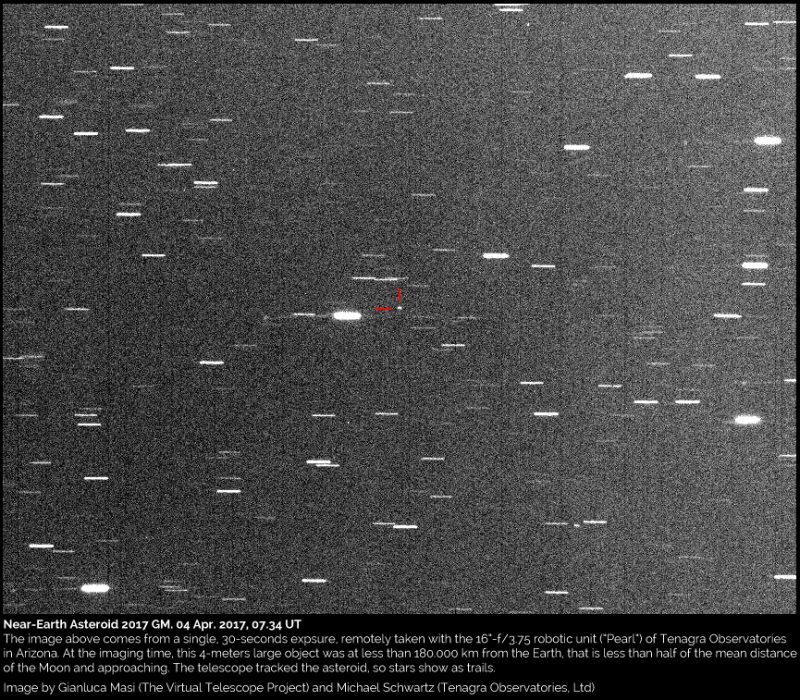
We captured 2017 GM while it was safely approaching us. For this, we remotely used a telescope in Arizona, made available to the Virtual Telescope by Tenagra Observatories, Ltd. Above is an image coming from a single 30-seconds exposure, unfiltered, taken with the 16?-f/3.75 Tenagra III ("Pearl") unit. The robotic mount tracked the fast apparent motion (150?/minute) of the asteroid, so stars are trailing. The asteroid is perfectly tracked: it is the sharp dot in the center, marked by two red lines.
On April 4, 2017, at 10:31 UTC (6:31 ET; translate to your time zone), this ~4 meters large rock reached its minimum distance from us of less than 1/20th of the mean lunar distance.
It is among the 10 known asteroids making the closest approach ever.
The observatory is placed at 4,265 feet (1,300 meters) above the sea level, in the Sonoran desert, providing one of the best skies in the world. This image was taken as part of a cooperation between the Virtual Telescope Project and Tenagra Observatories, Ltd., which will be announced soon.



Reader Comments
to our Newsletter